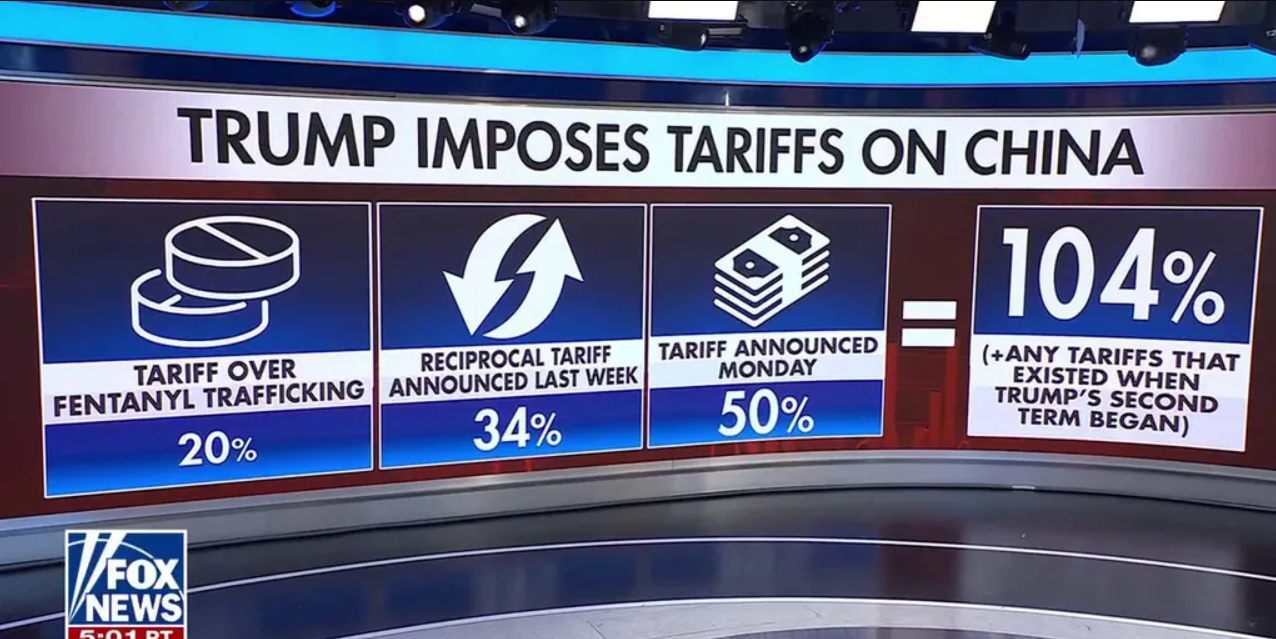
U.S. President Donald Trump levied a 104% tariff on China, April 9, 2025.
No single country can respond to the fentanyl challenge alone. What’s needed is joint effort and sustained cooperation – not economic coercion.
A visiting American guest recently shared with me the deep pain gripping American society amid the fentanyl crisis. He right away won my sympathy and understanding. The Chinese people carry a painful memory of their own: the devastation wrought by drugs in our modern history.
When my daughter entered middle school, I insisted she visit the anti-drug exhibition. She was reluctant as she was always overwhelmed with schoolwork and barely had time for a movie, but I insisted: you must know this issue – and never, ever touch drugs in your life. For a mother, there is no higher priority than the child’s health and well-being.
China has the strictest drug laws in the world. Cultivation, production, or trafficking of narcotics carries harsh criminal penalties. When I was ambassador to the United Kingdom, a British national received the death penalty in China for trafficking drugs. The British media reacted strongly, as society was angry about the case. I was summoned to the Foreign Office for a reproachment on a late Friday evening. I offered officials a history lesson on the Opium War of 1840 and reminded them that this man was caught with over 4 kilograms (4,030 grams to be exact) of heroin – enough to kill many young lives and plunge their families into grief.
The drug issue today has gone to another level. Modern chemistry has given rise to a new generation of synthetic narcotics. Unlike traditional drugs derived from plants, fentanyl is made in laboratories with chemical precursors plus a simple synthetic process. Its molecular structure can be easily modified, allowing illicit “chemists” to stay a step ahead of regulation.
Fentanyl was originally developed as a powerful tool in modern medicine to relieve severe pain. Denying patients access to such treatment is inhumane. Yet its addictive potential and the irreversible harm caused by excessive use have also made it dreadfully dangerous.
The United States has been grappling with fentanyl abuse for over a decade. Demand has fueled a large, malevolent underground market. The challenge is: How can fentanyl be prevented from being diverted to criminal networks while ensuring legitimate access to medical precursors? And how to break the chain of illicit synthesis and trafficking?
No single country can respond to the challenges alone. They require joint effort and sustained cooperation – particularly among nations where abuse is rampant and those that manufacture the relevant chemicals.
China has maintained a remarkably low rate of drug abuse and successfully prevented large-scale fentanyl misuse within its borders. This has been achieved through a combination of measures: a science-based regulatory system including officially regulated fentanyl substances as a class in 2019, strict pharmaceutical oversight, robust law enforcement, widespread public education, and a comprehensive rehabilitation network.
As a major producer of chemical products, China also takes its international responsibilities seriously. It has strengthened controls over precursor chemicals, enhanced cooperation through bilateral and multilateral mechanisms, and worked closely with the United States in combating fentanyl trafficking. It’s unreasonable for the U.S. to use the fentanyl issue as an excuse to impose tariffs on China.
There is a saying in Chinese: “When evil rises by a foot, righteousness must rise by ten.” It means: Those who uphold justice must always stay ahead of those who do harm. Today, the U.S. needs to rise above the geopolitics and ideological hurdles and engage China with honesty and pragmatism. Then there would be no challenge we cannot face together. Countries that produce chemical precursors should focus on building full-chain traceability systems to detect and shut down channels of leakage. And, more fundamentally, countries facing widespread drug misuse must strengthen education, improve domestic governance, and invest in communities, so as to effectively solving the problem from the demand side. Ultimately, the root of the crisis lies within.
If the U.S. is serious about working with China, there are many areas of opportunity: stronger law enforcement collaboration, intelligence sharing, and anti-money laundering cooperation, as well as joint research and development of addiction treatments and non-opioid pain relief.
But all of this depends on trust. Experts on both sides need space to build shared knowledge, expose trafficking networks, and pursue evidence-based enforcement.
China and the U.S. have the wisdom and capacity to work together. Imposing tariffs is not a productive choice.
Copyright: The original article was published in The Diplamat.